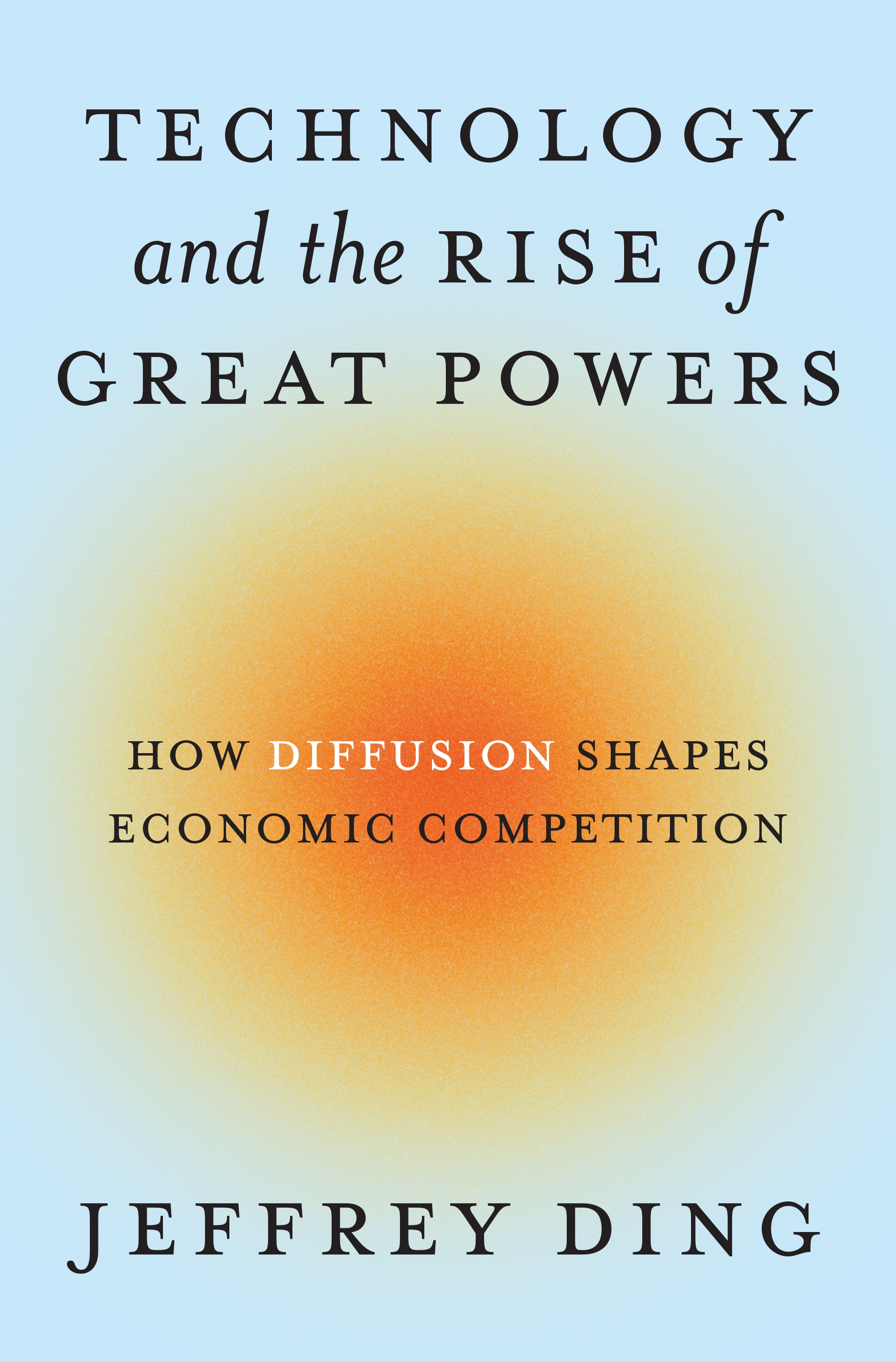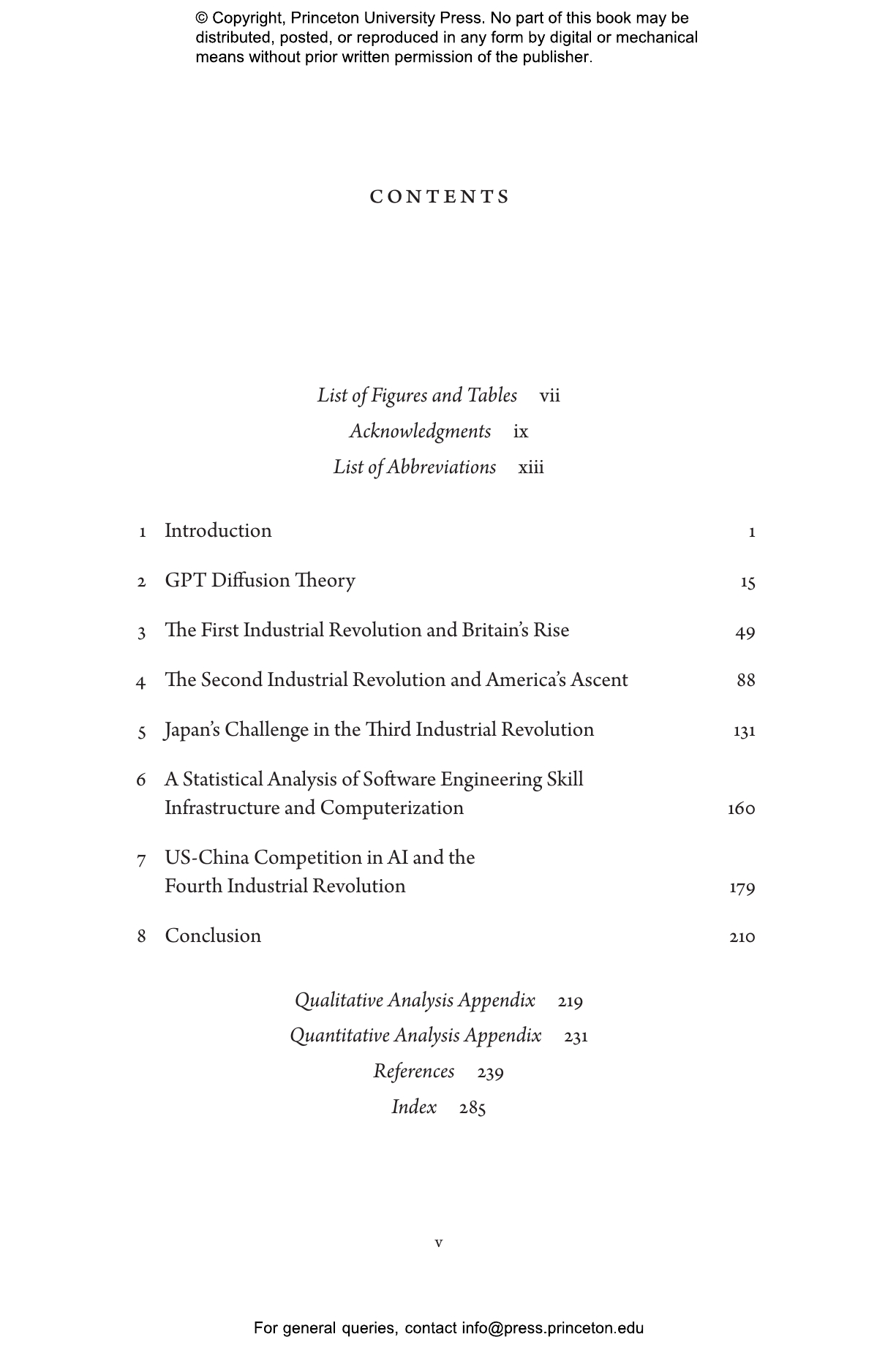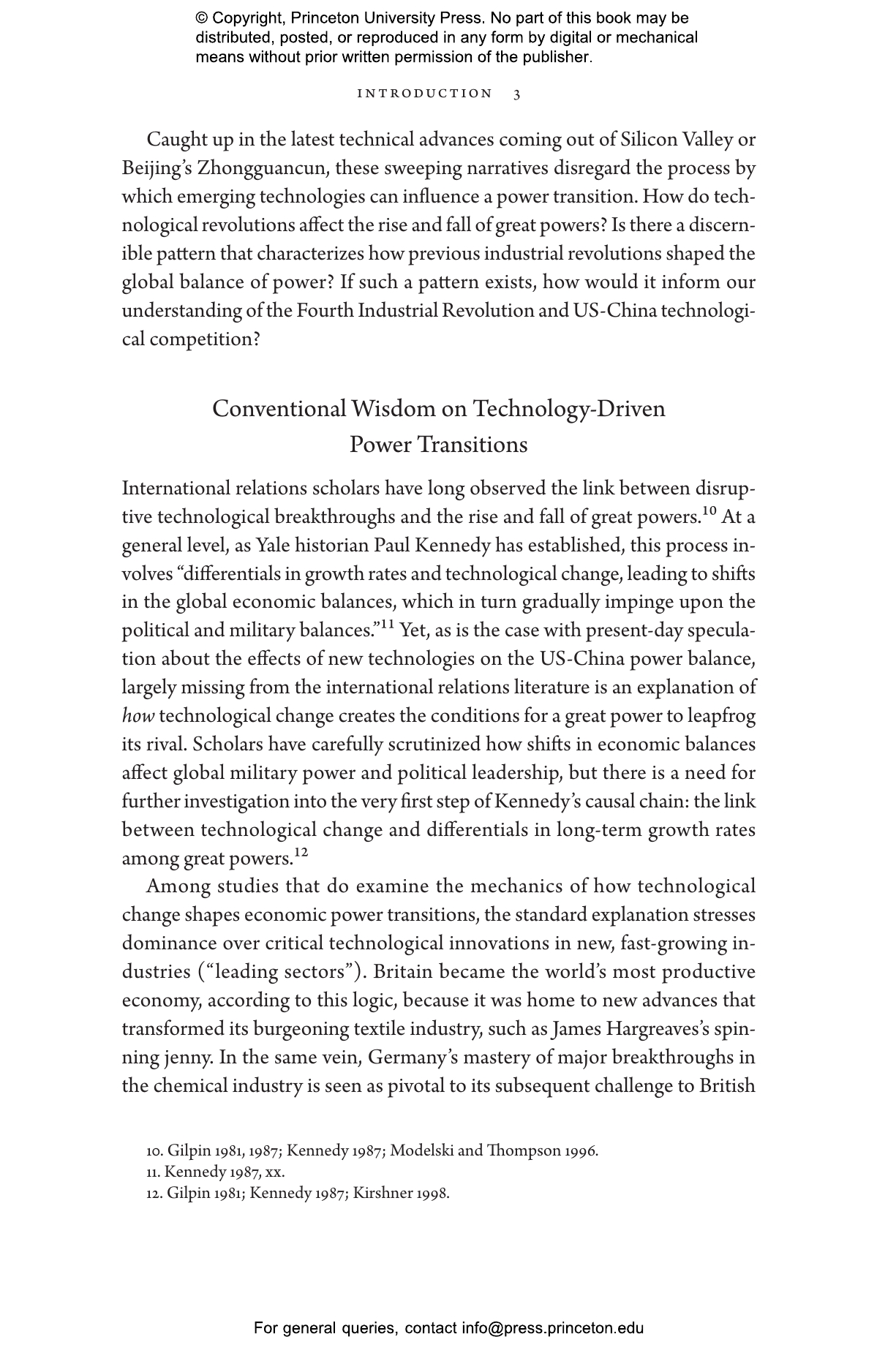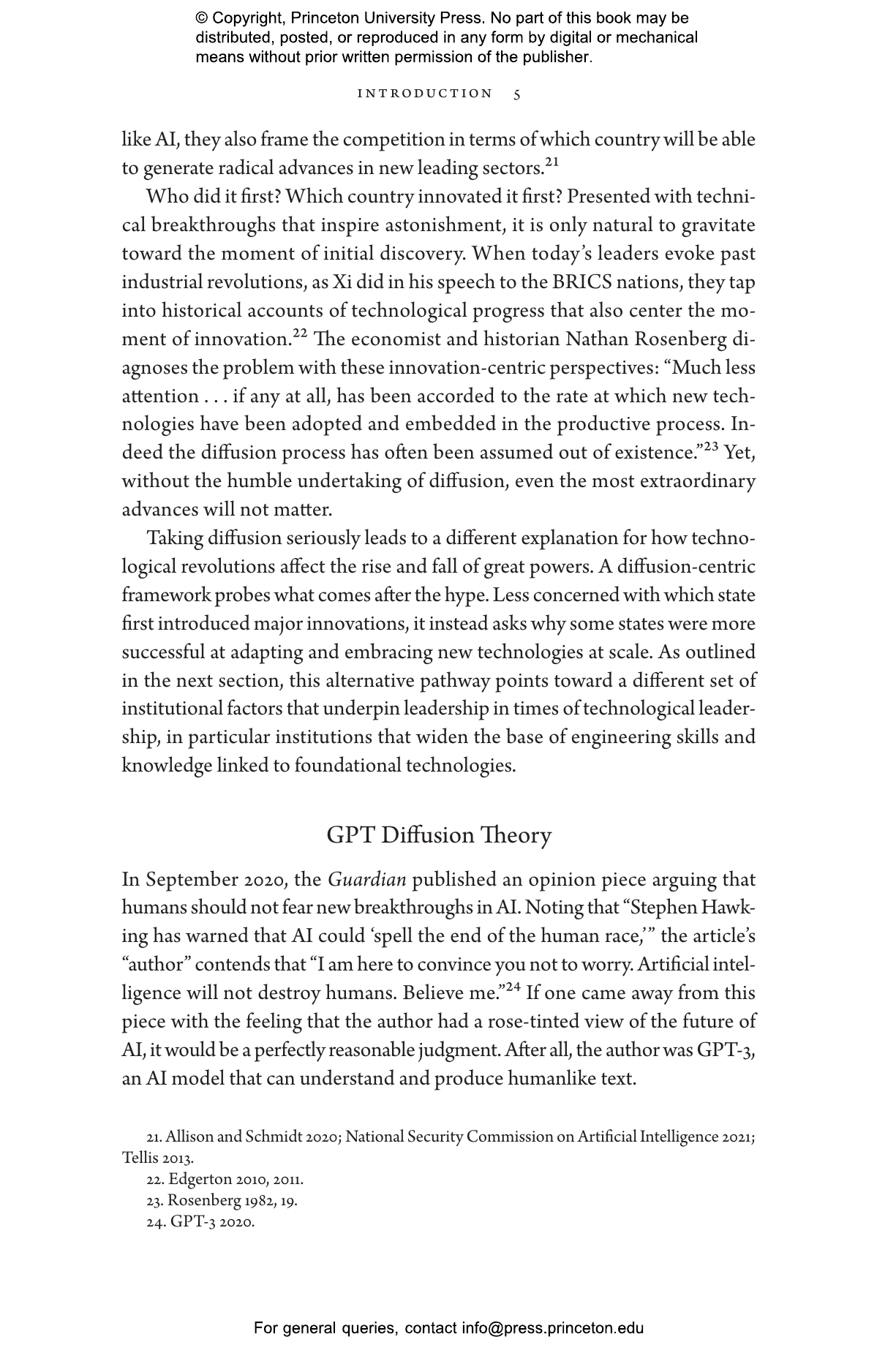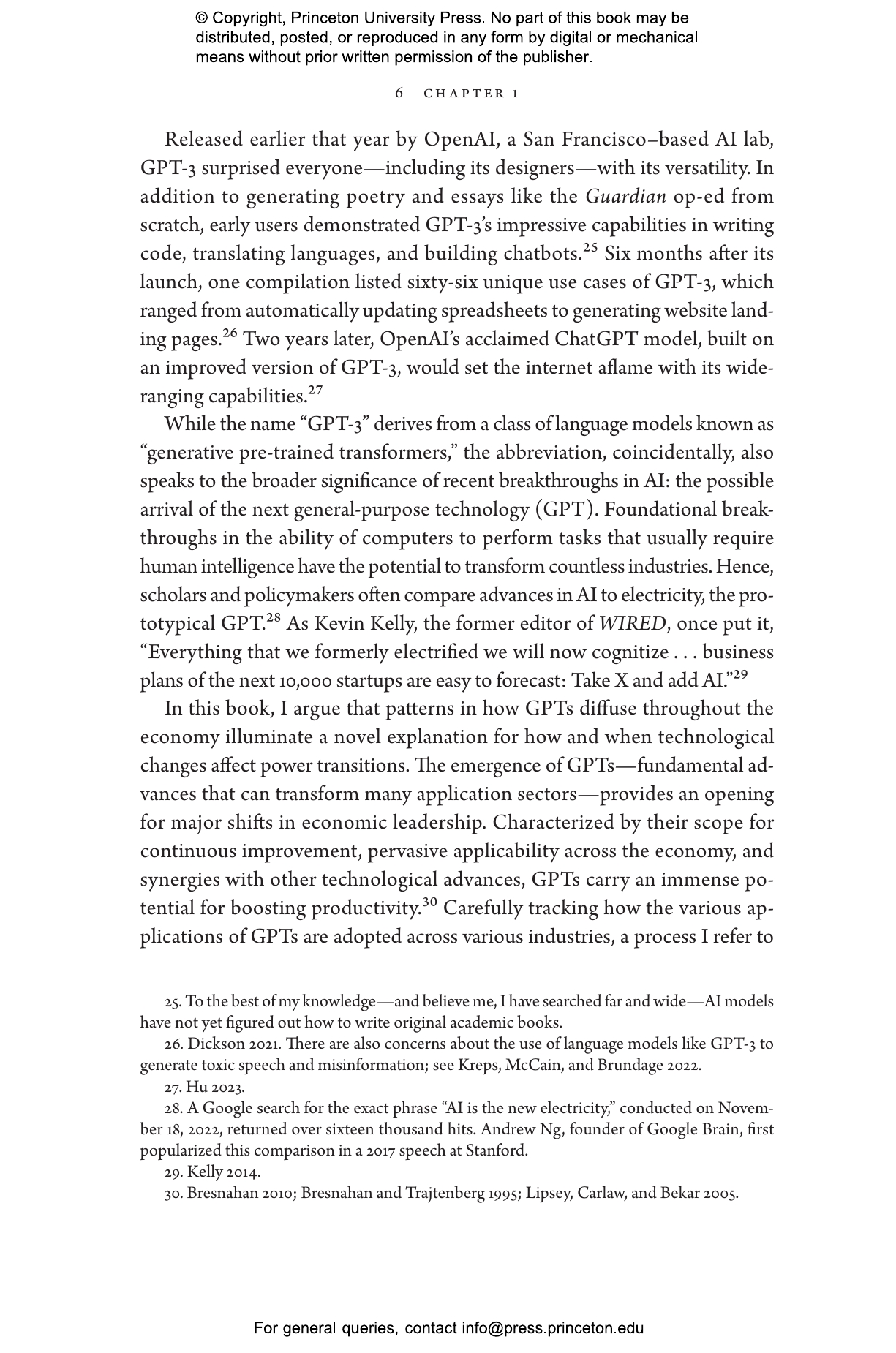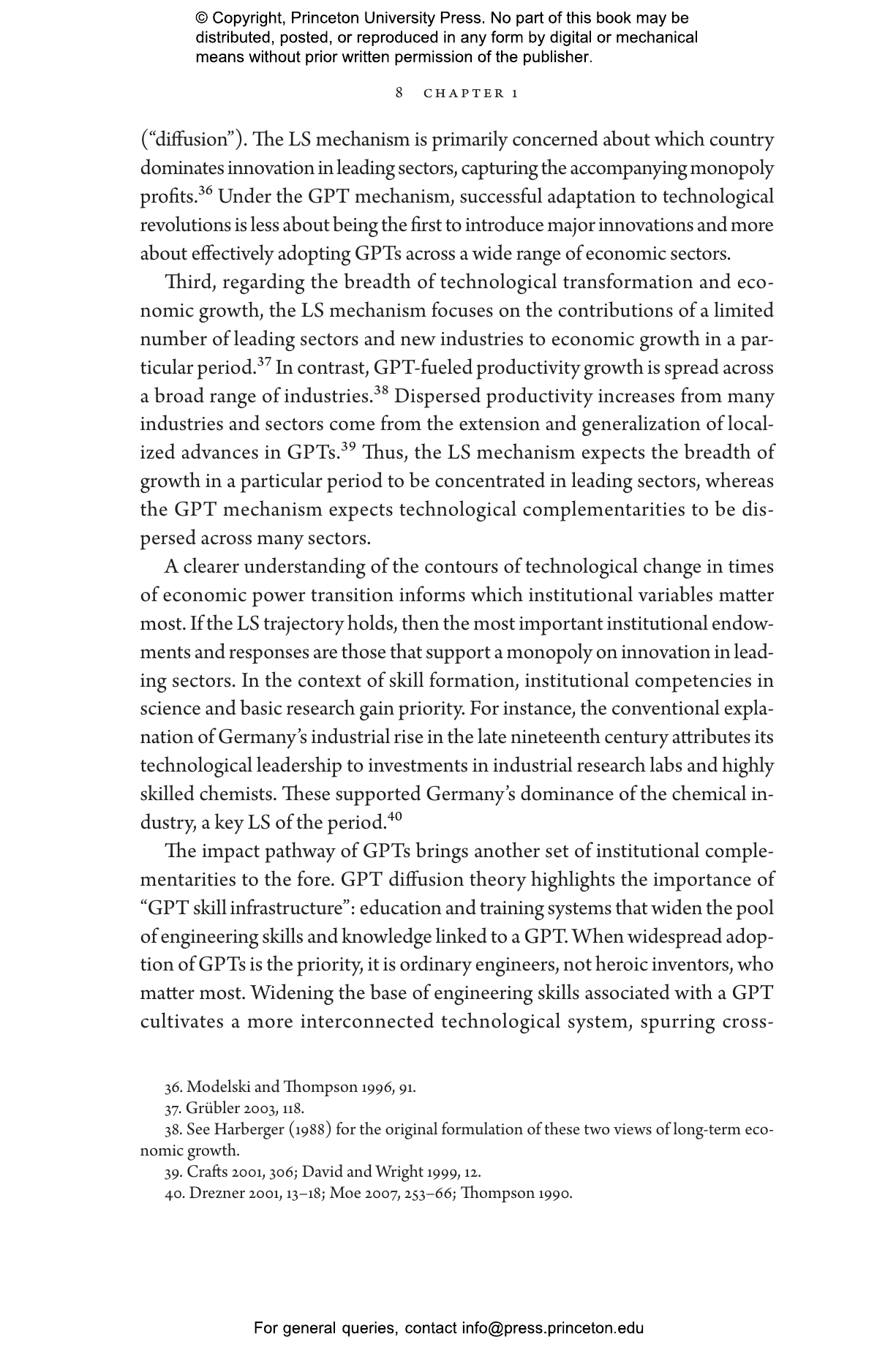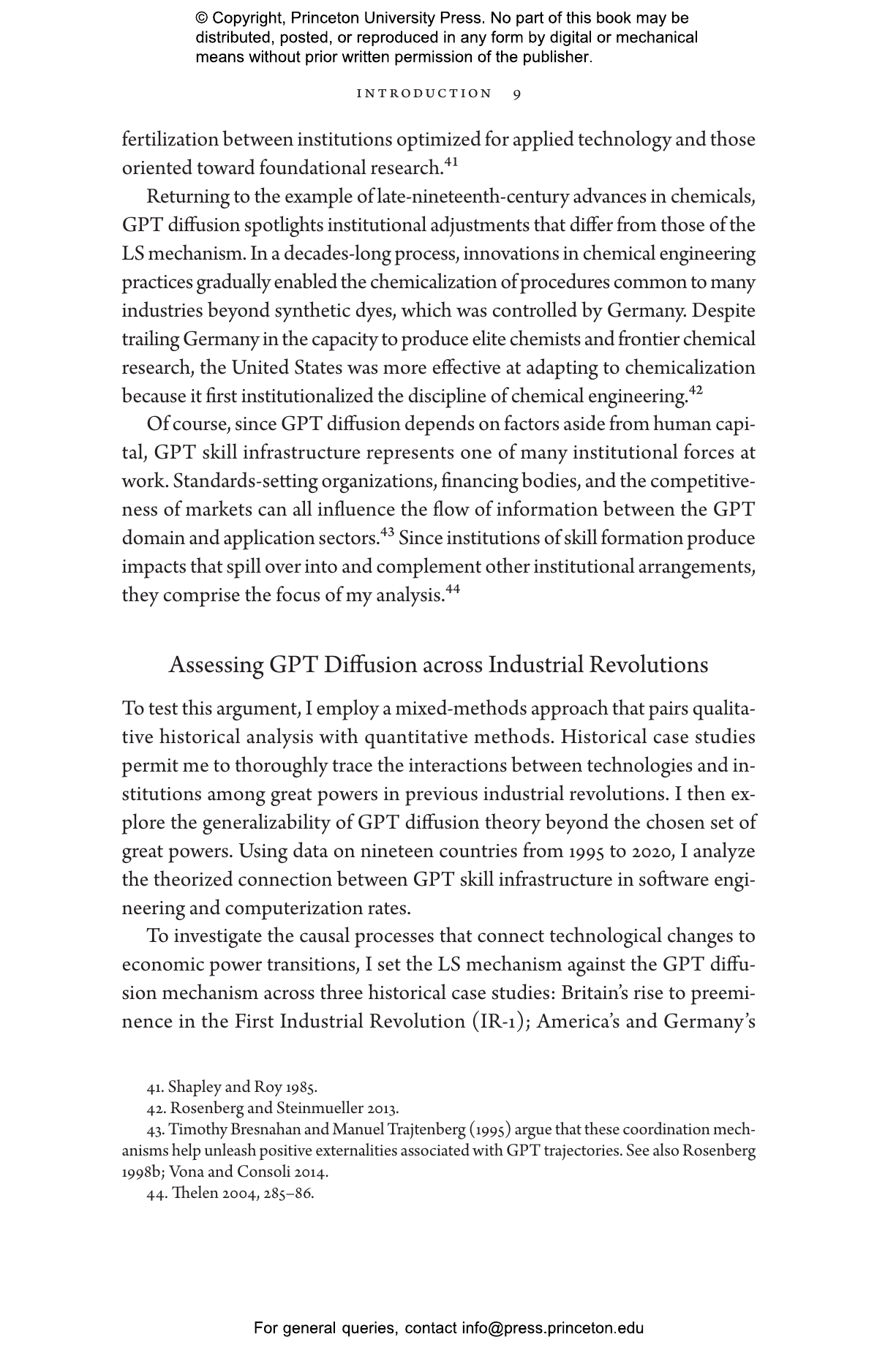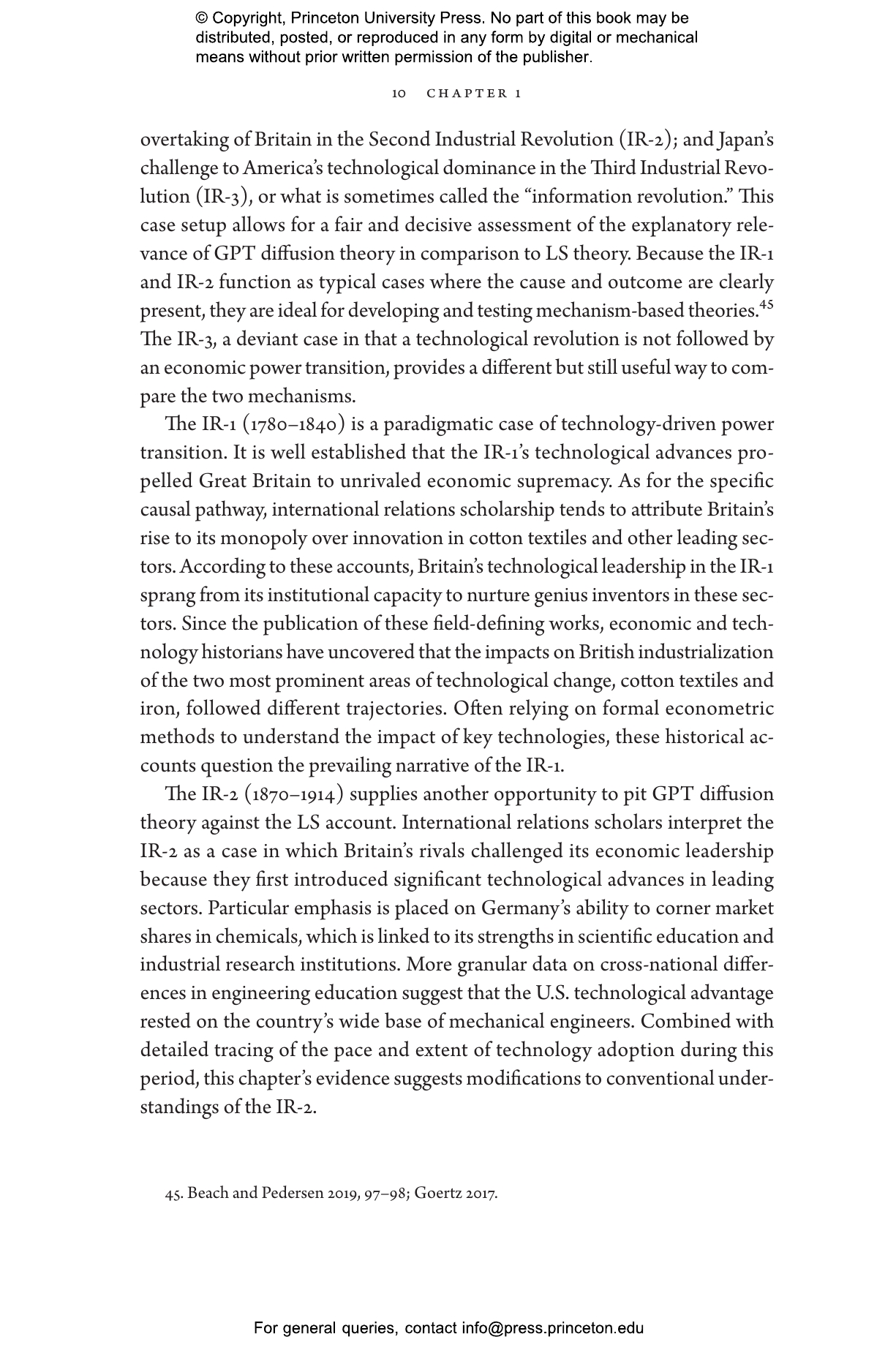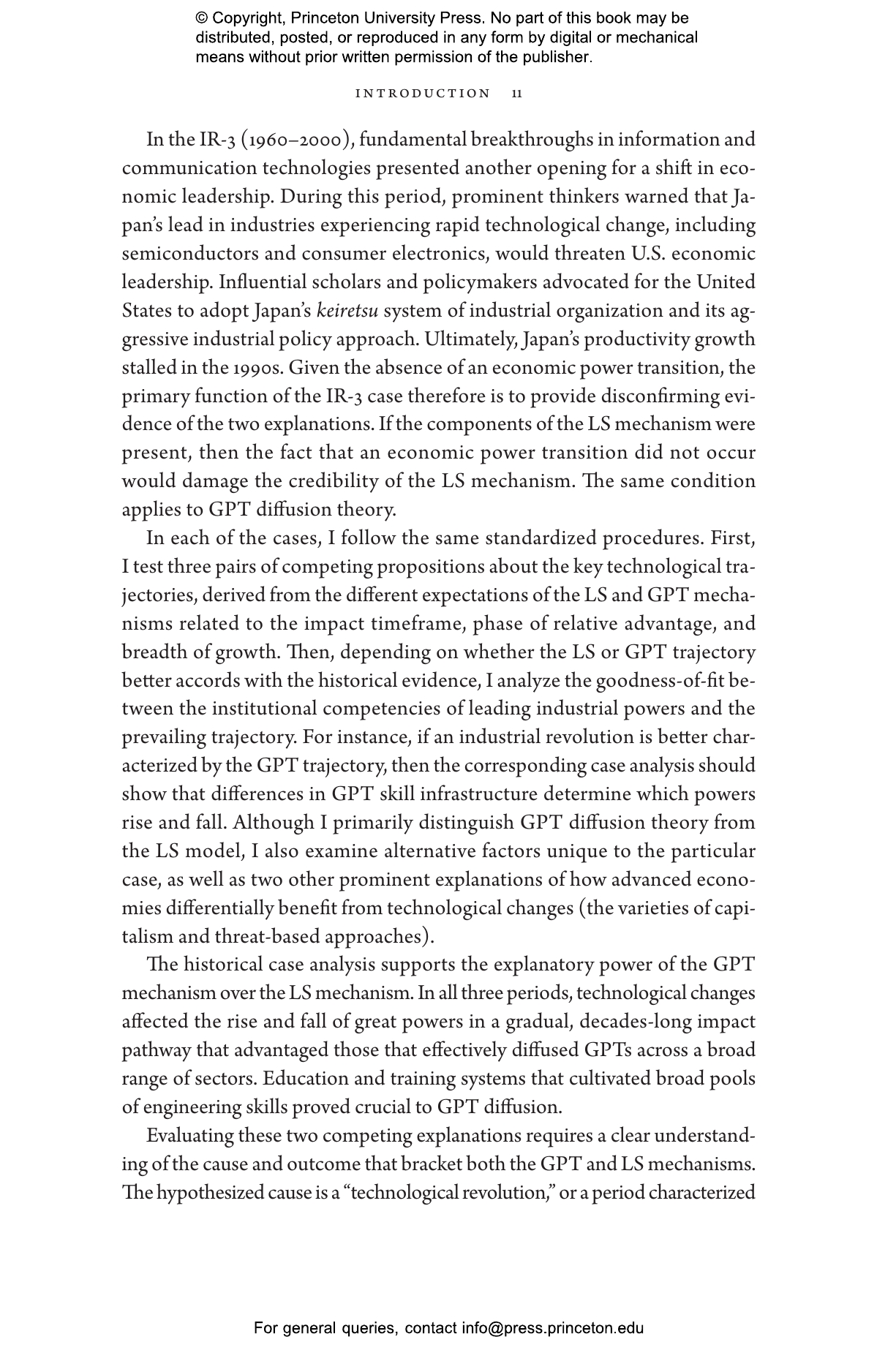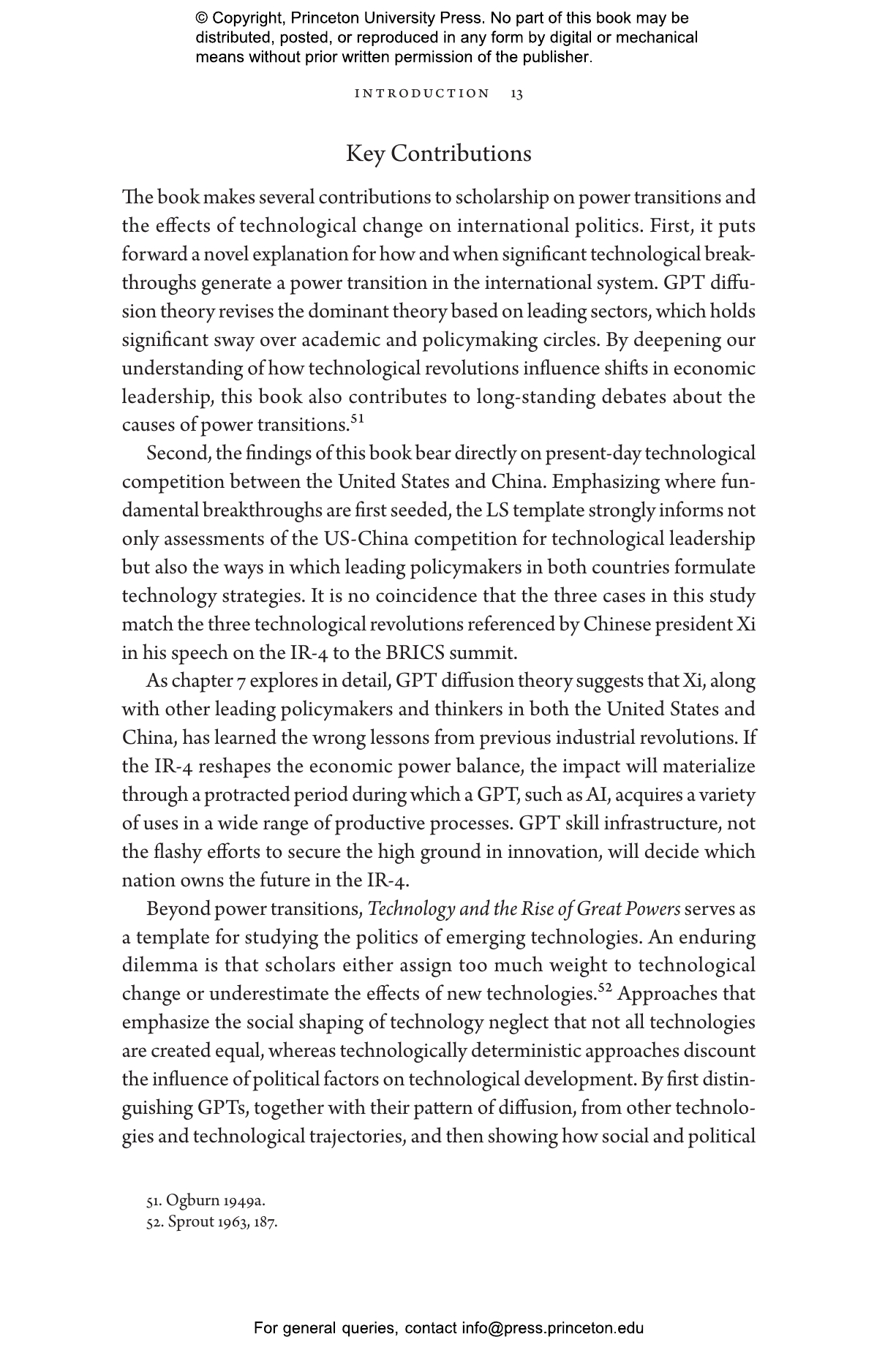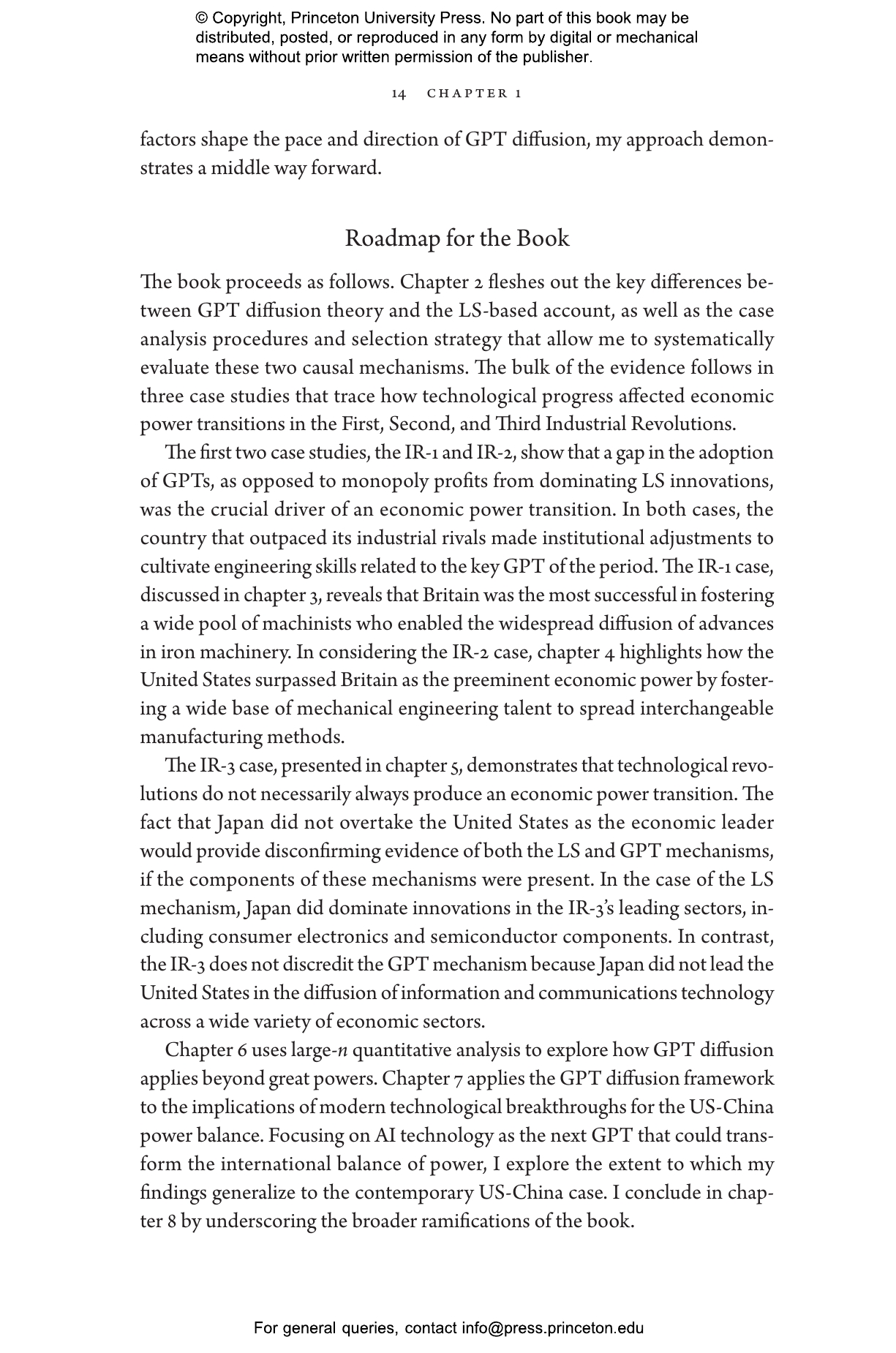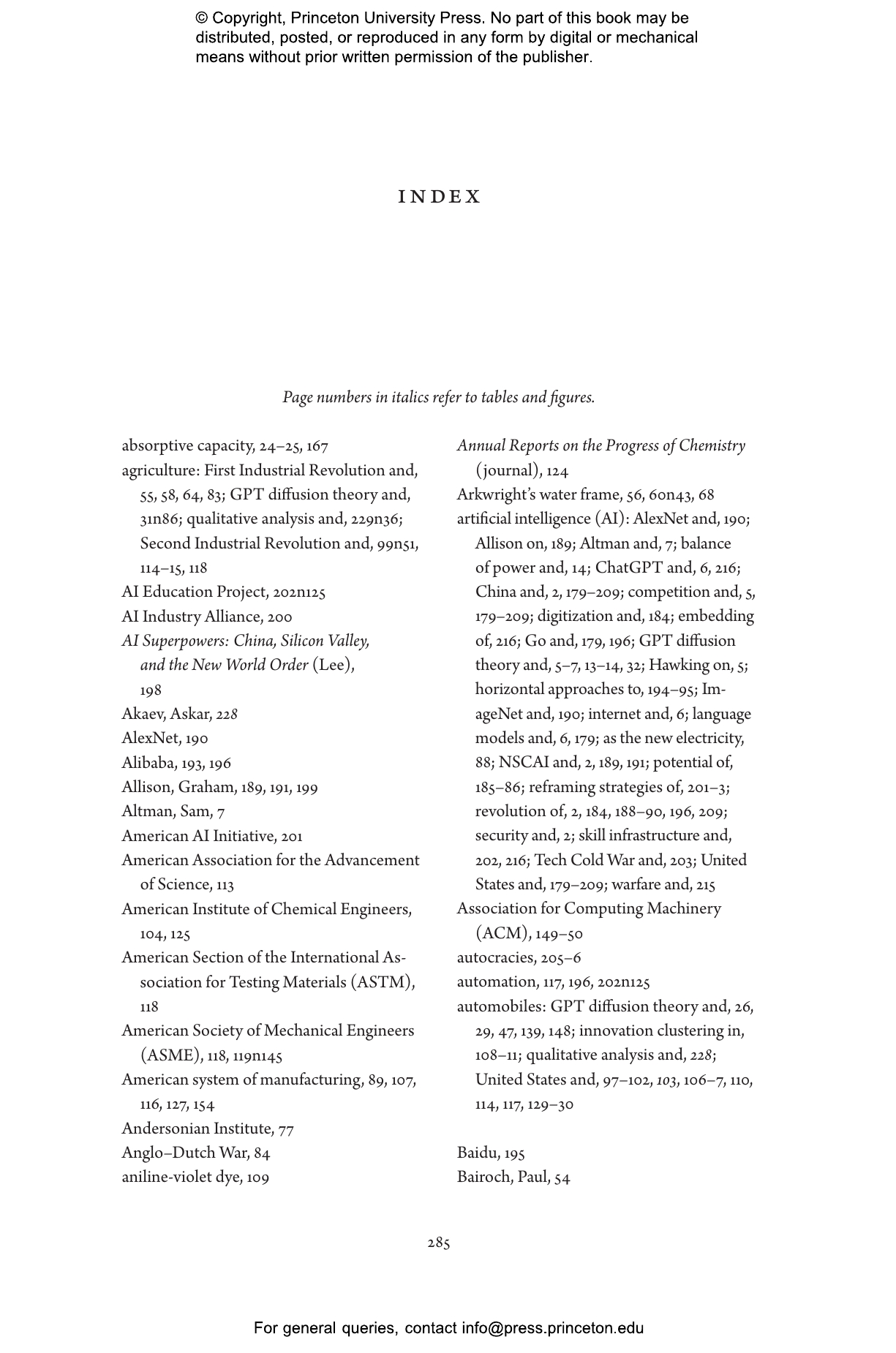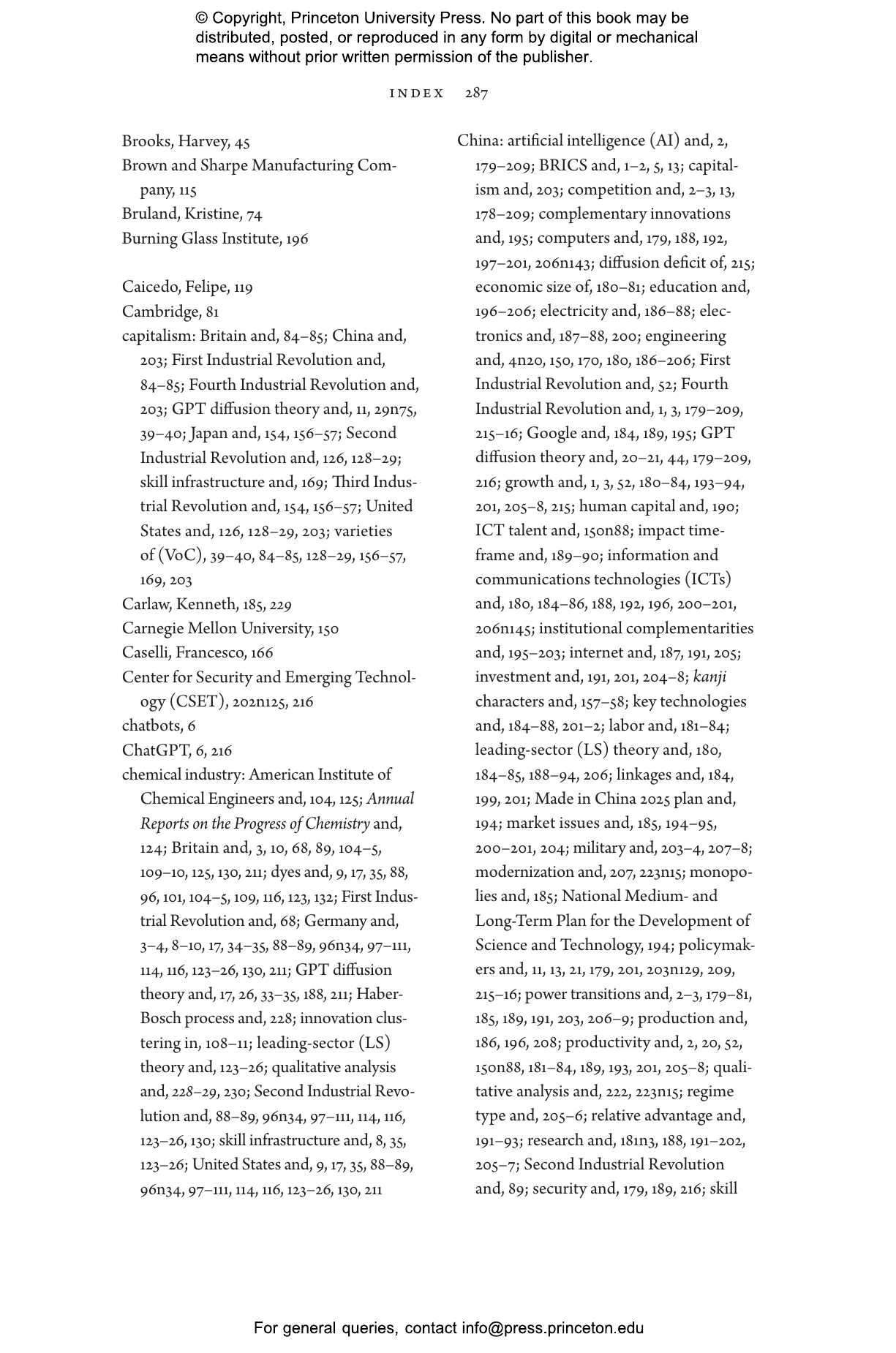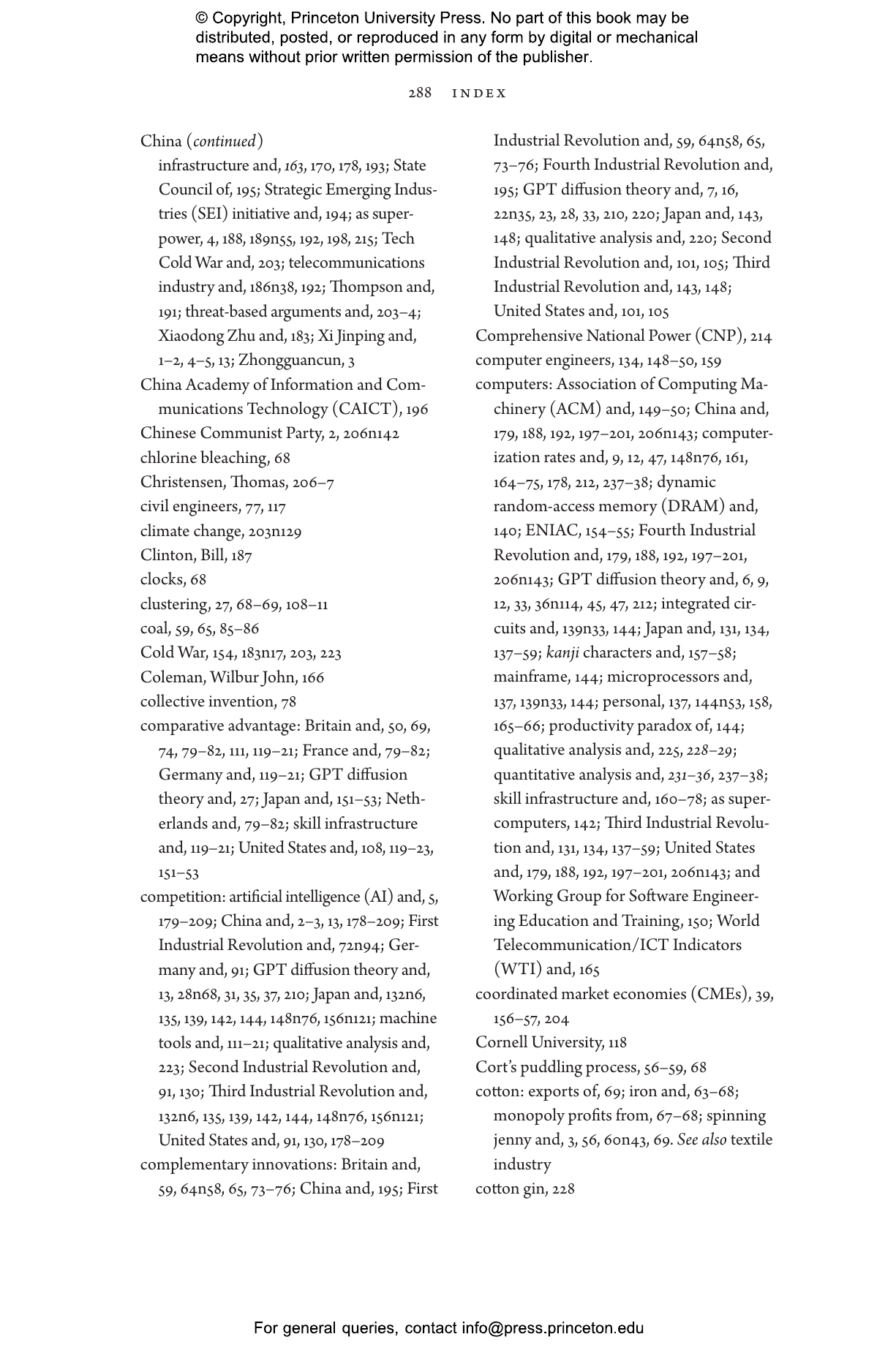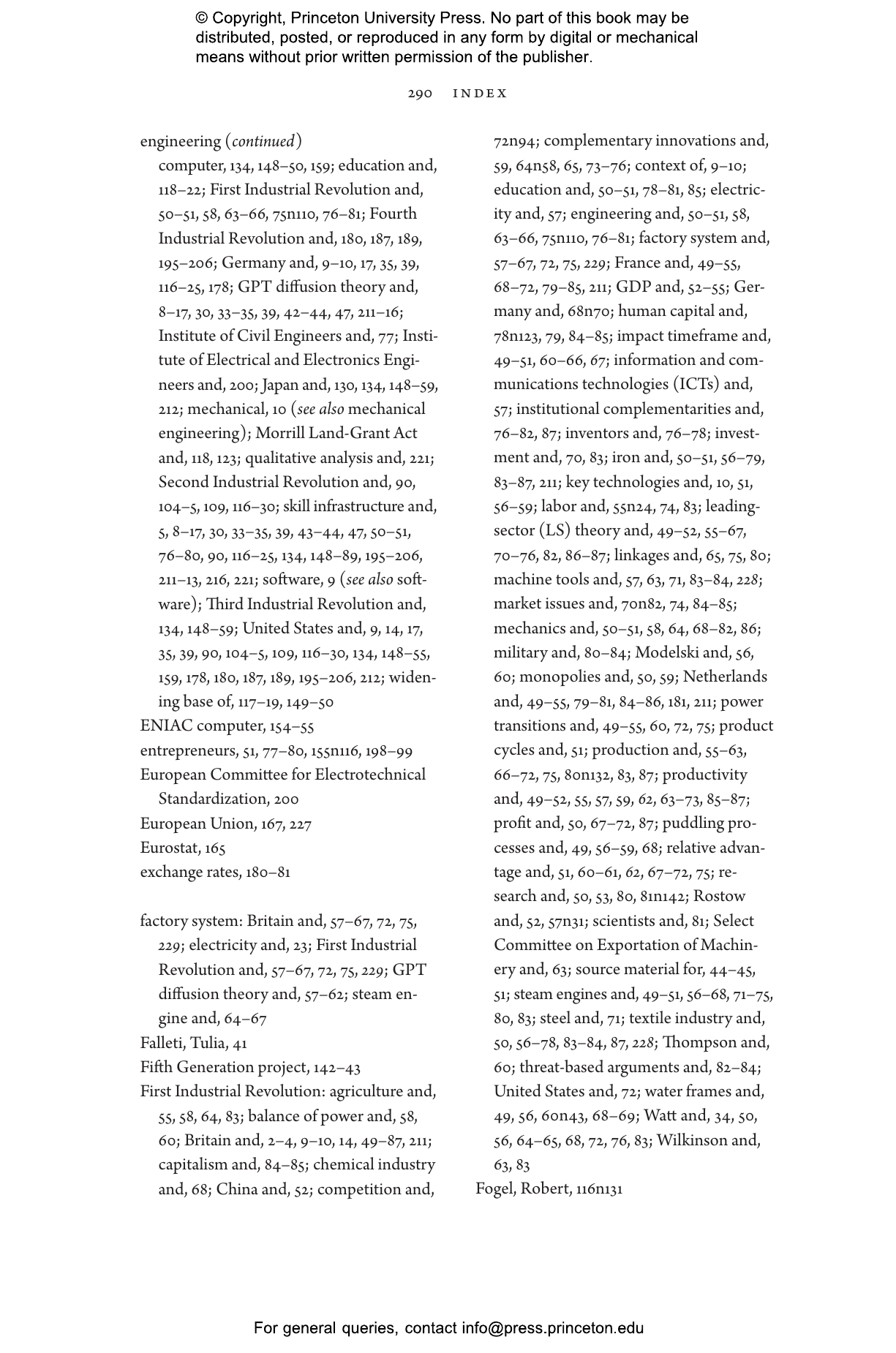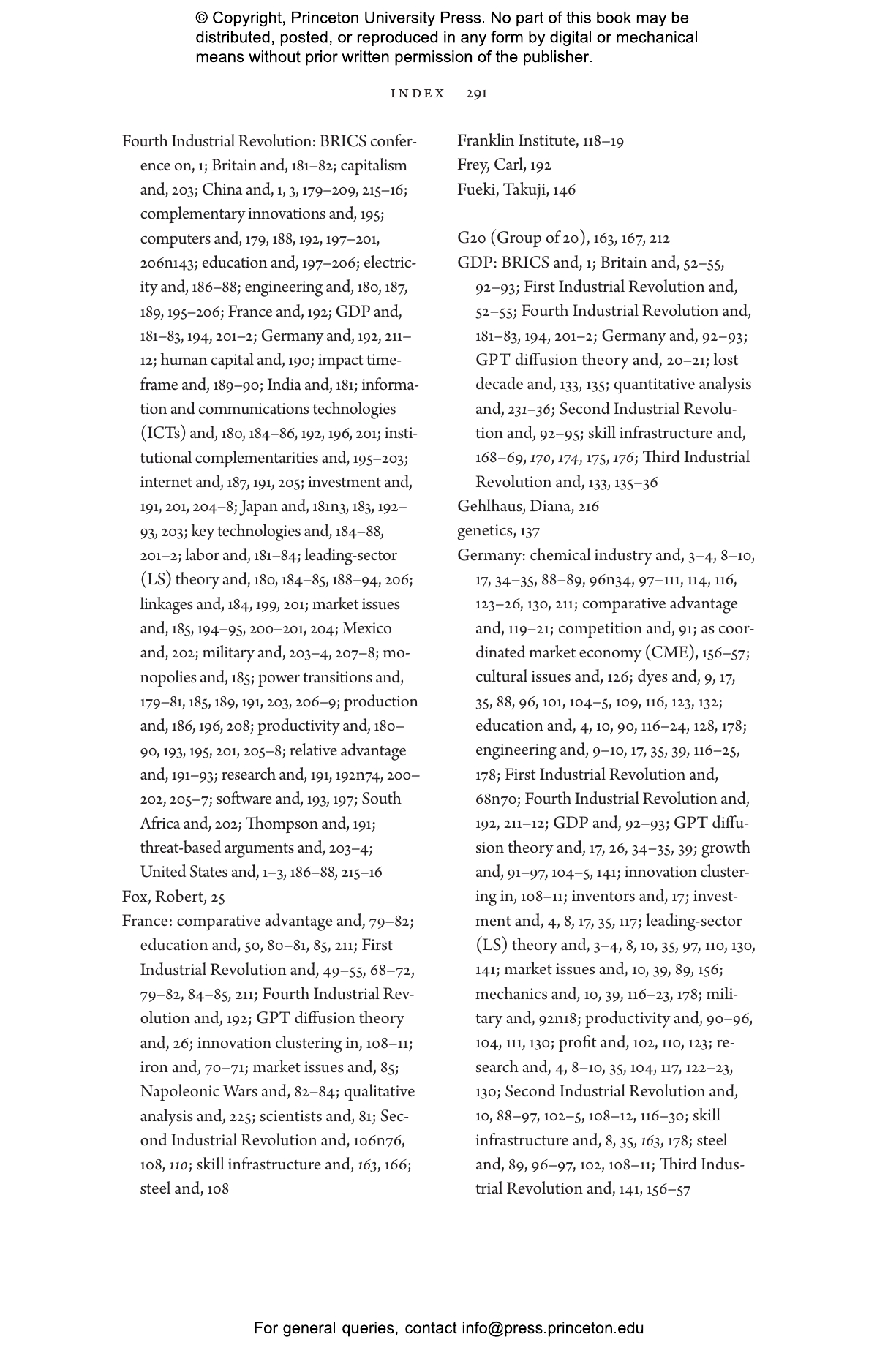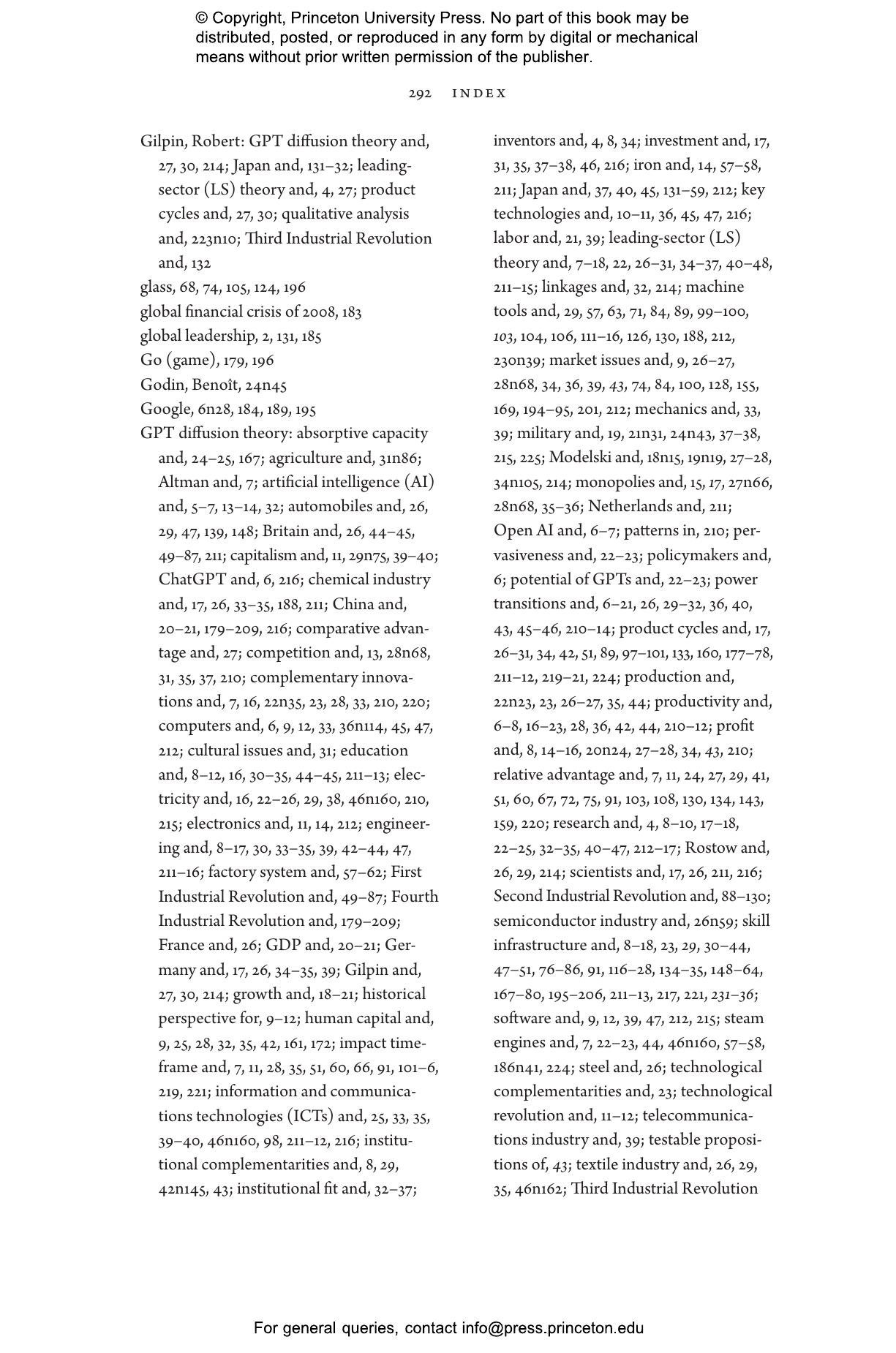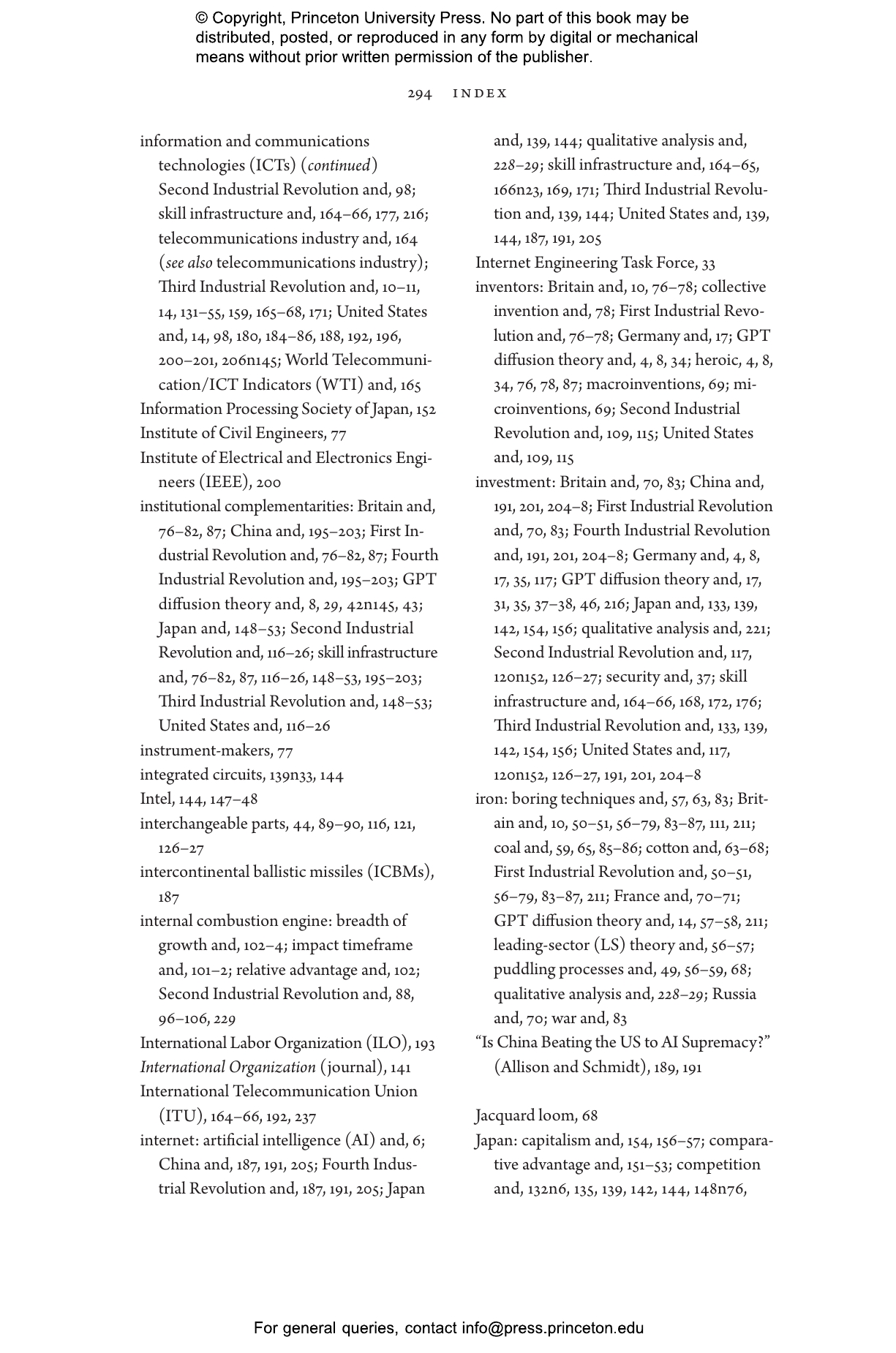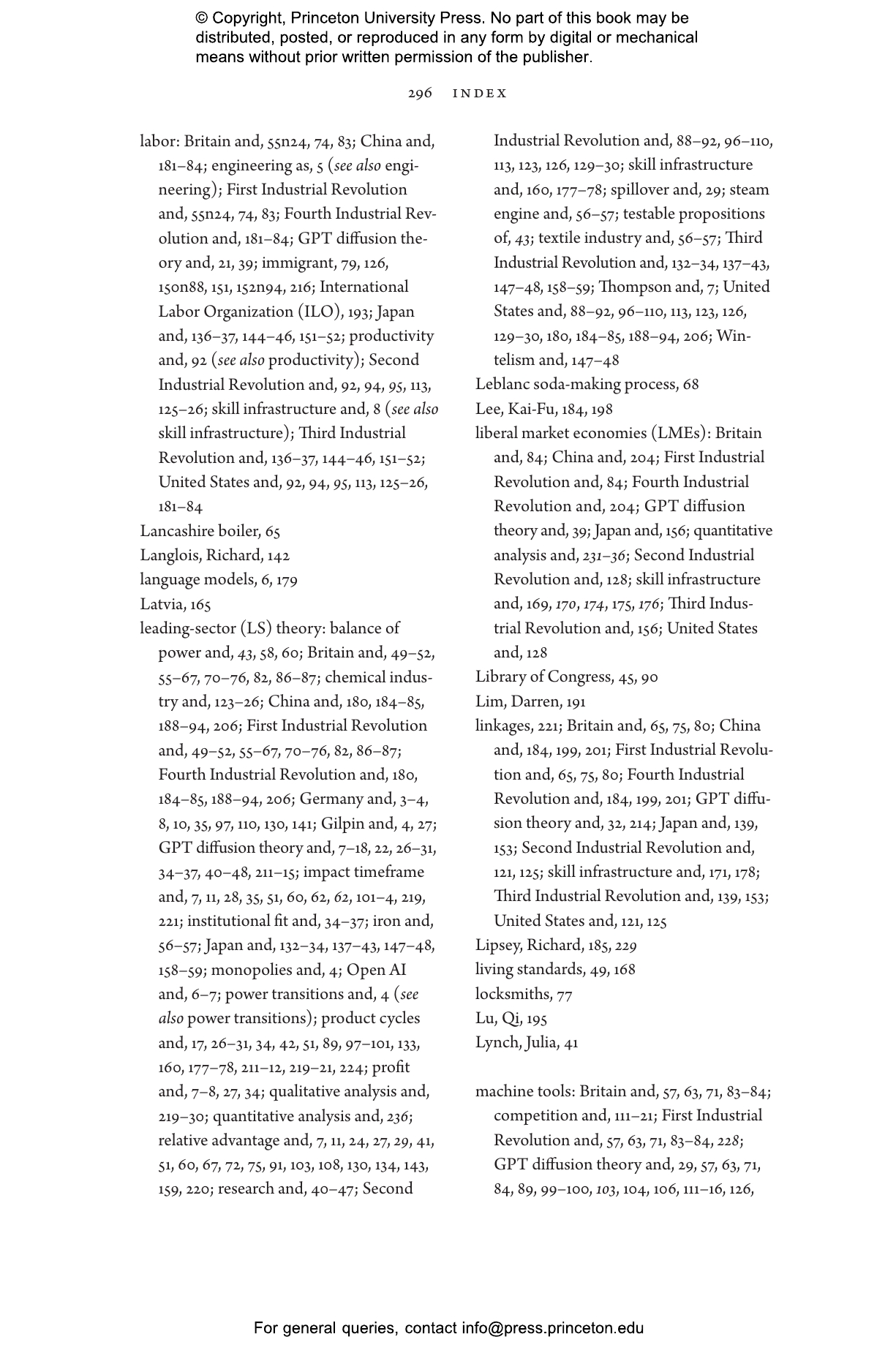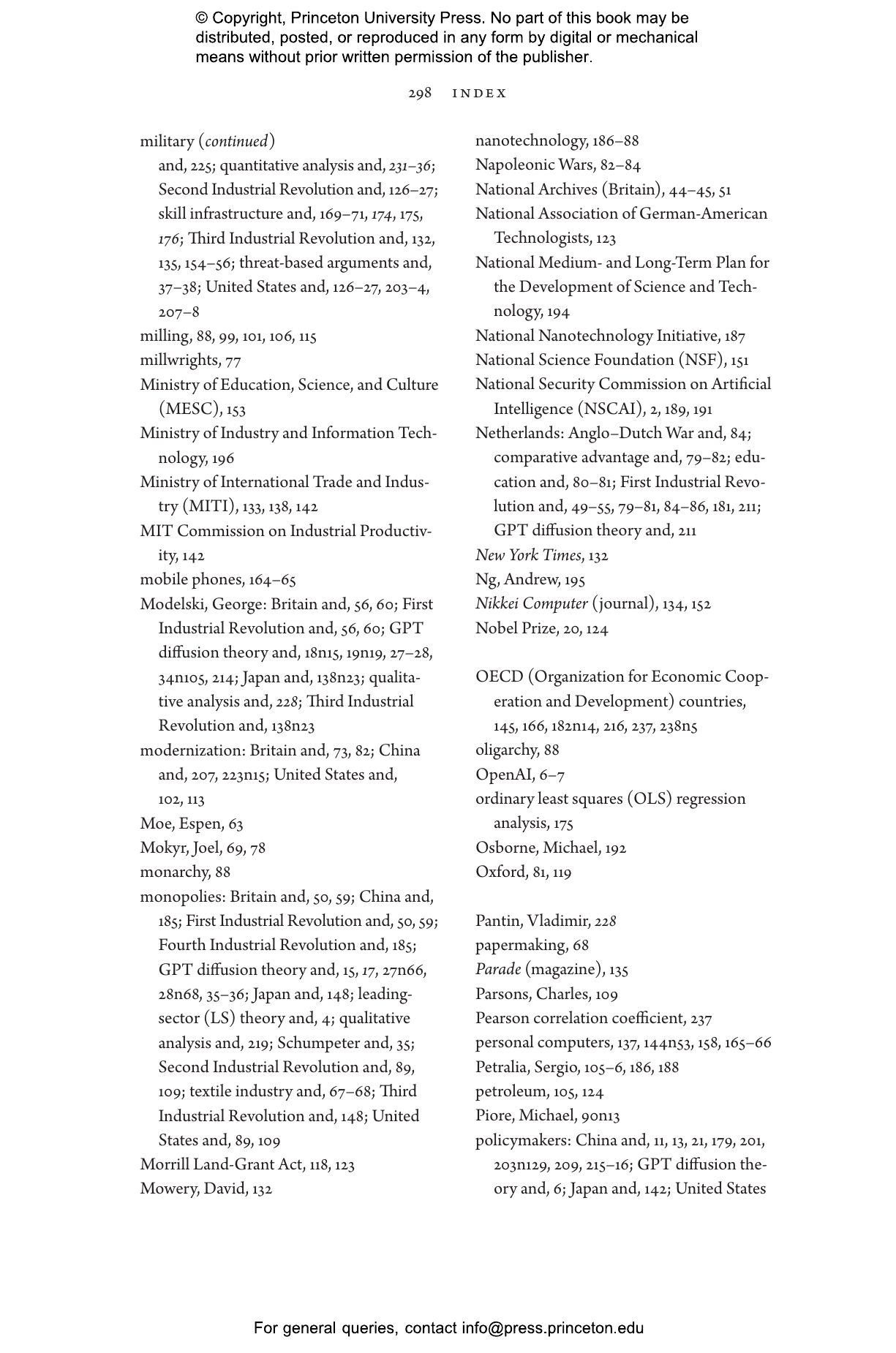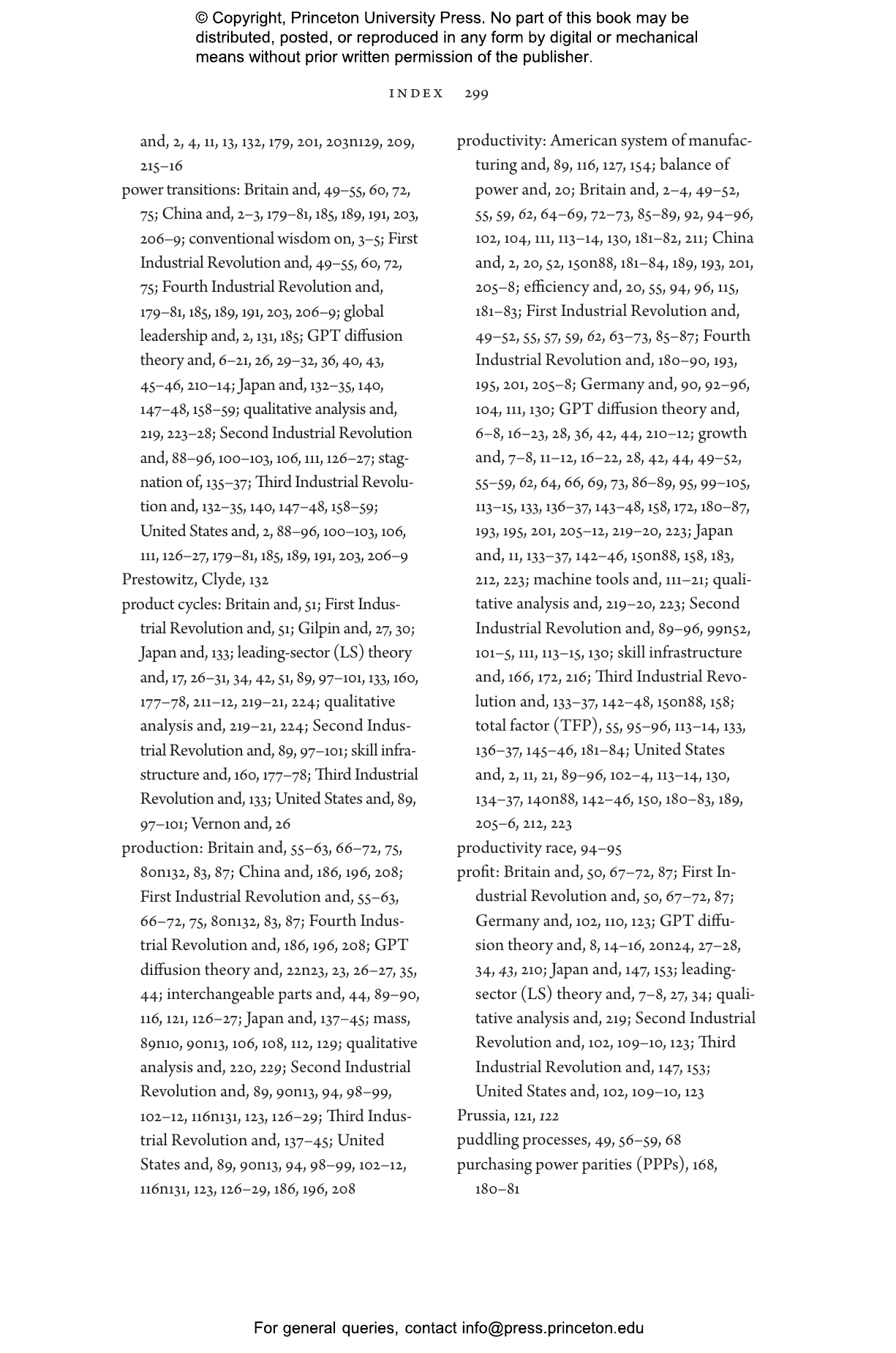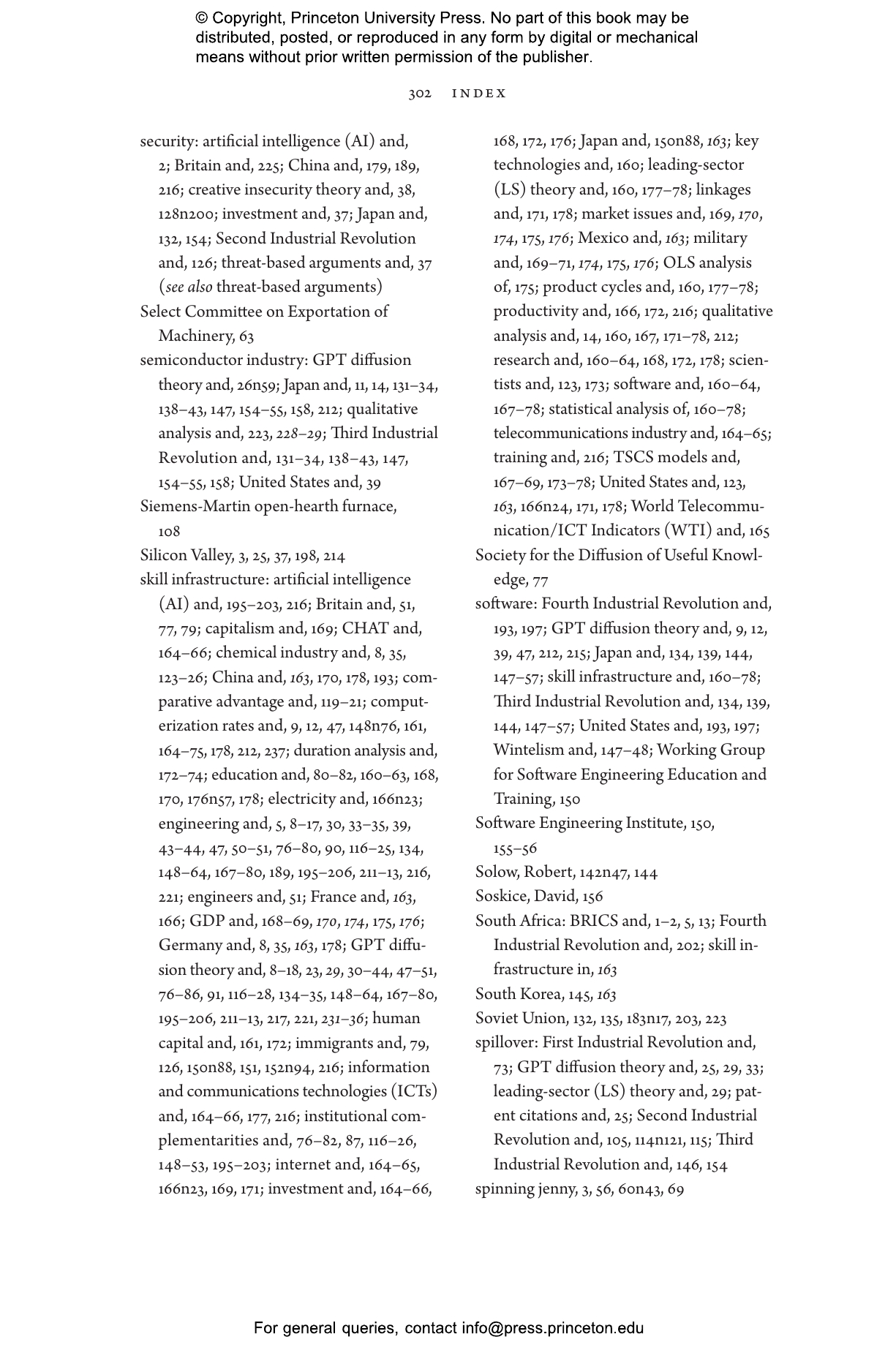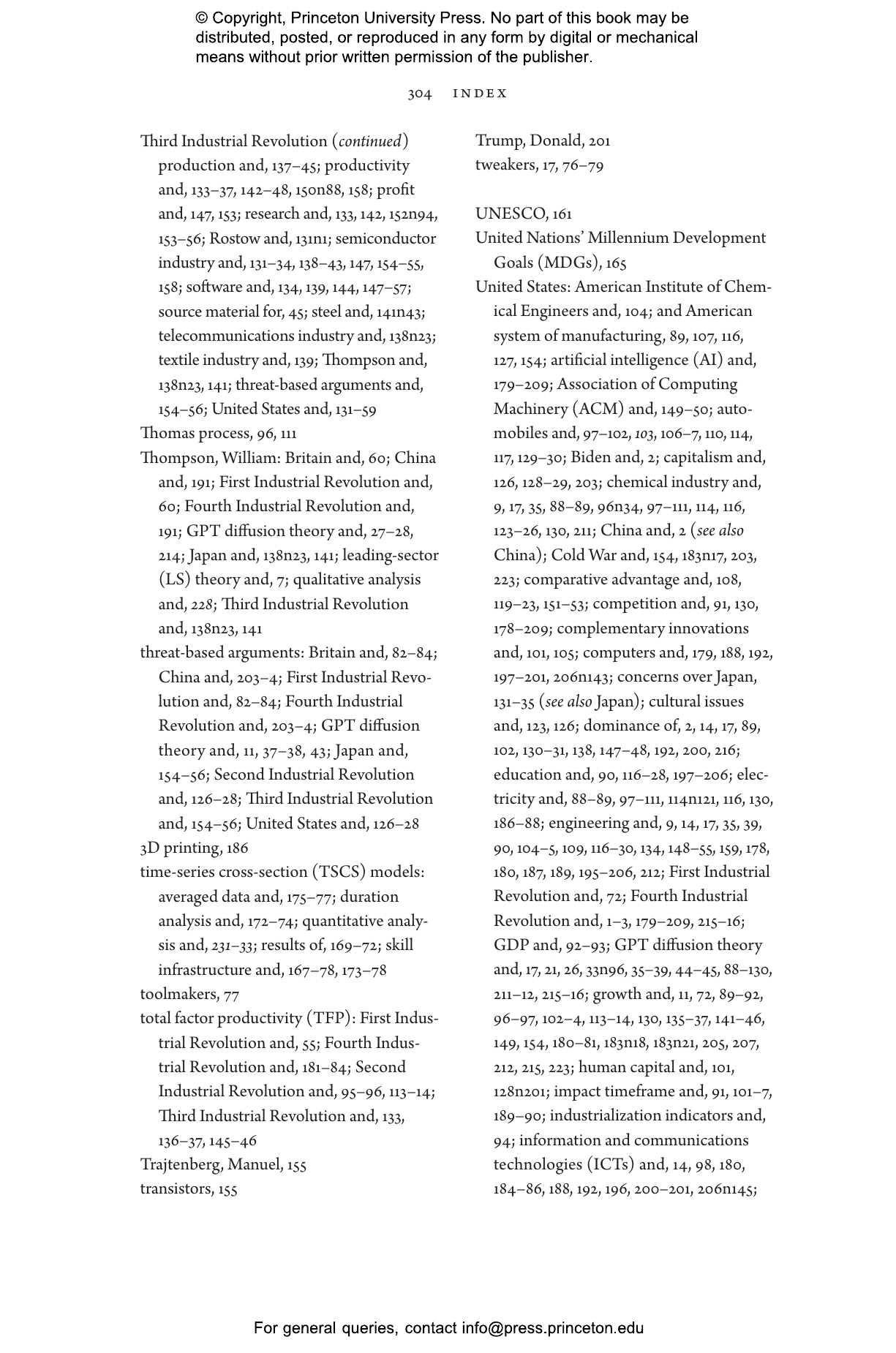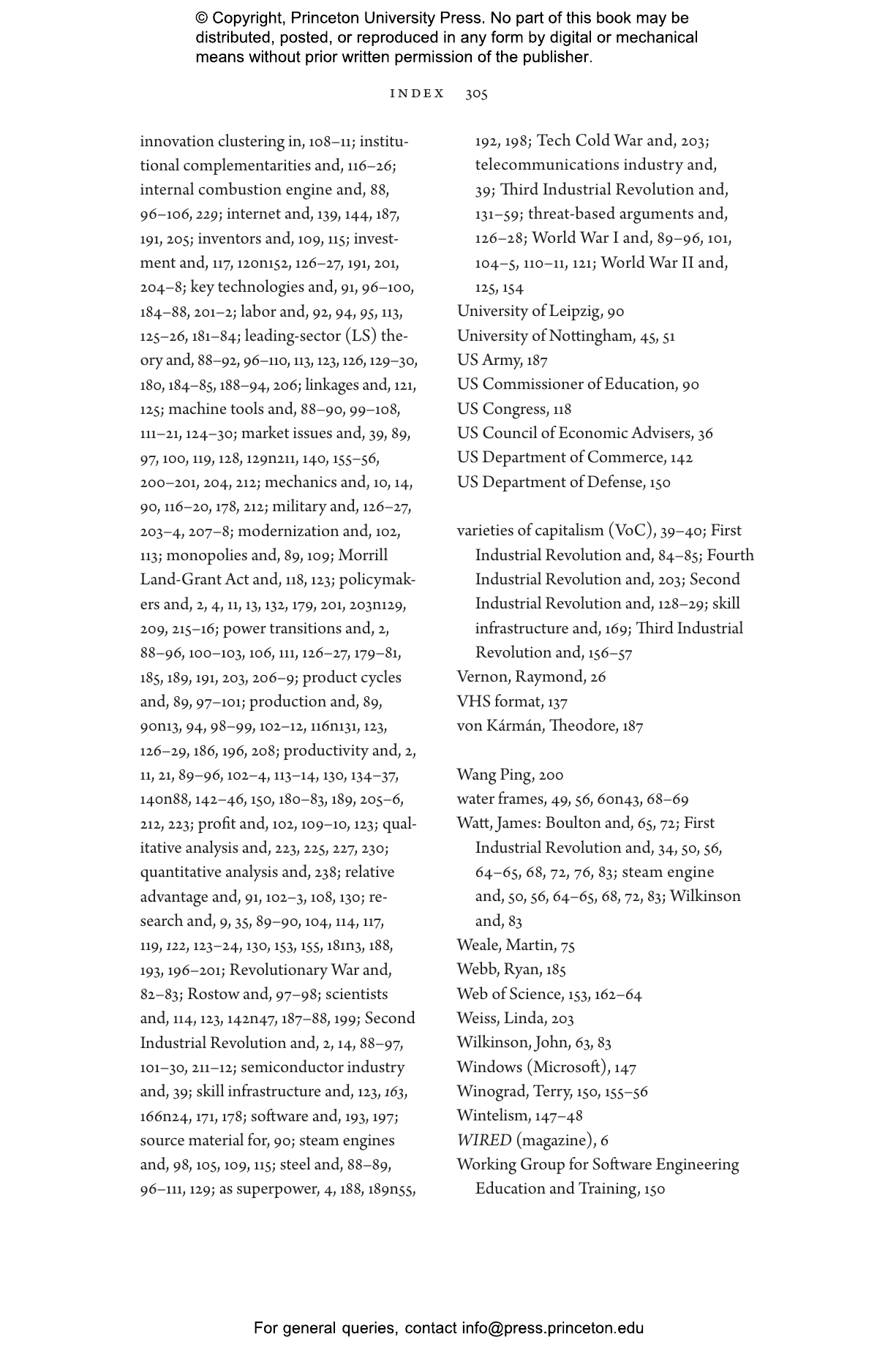When scholars and policymakers consider how technological advances affect the rise and fall of great powers, they draw on theories that center the moment of innovation‚ÄĒthe eureka moment that sparks astonishing technological feats. In this book, Jeffrey Ding offers a different explanation of how technological revolutions affect competition among great powers. Rather than focusing on which state first introduced major innovations, he investigates why some states were more successful than others at adapting and embracing new technologies at scale. Drawing on historical case studies of past industrial revolutions as well as statistical analysis, Ding develops a theory that emphasizes institutional adaptations oriented around diffusing technological advances throughout the entire economy.
Examining Britain‚Äôs rise to preeminence in the First Industrial Revolution, America and Germany‚Äôs overtaking of Britain in the Second Industrial Revolution, and Japan‚Äôs challenge to America‚Äôs technological dominance in the Third Industrial Revolution (also known as the ‚Äúinformation revolution‚ÄĚ), Ding illuminates the pathway by which these technological revolutions influenced the global distribution of power and explores the generalizability of his theory beyond the given set of great powers. His findings bear directly on current concerns about how emerging technologies such as AI could influence the US-China power balance.
Awards and Recognition
- An ITIF Innovation Policy Book for Summer
- A Chicago Council on Global Affairs Read of the Year
Jeffrey Ding is assistant professor of political science at George Washington University. He also holds research affiliations with the Foreign Policy Research Institute, the Elliott School of International Affairs, and the Centre for the Governance of AI.
"One of the best books examining . . . how technology enables national power is from Jeffrey Ding. . . . An important and interesting book."‚ÄĒInformation Technology & Innovation Foundation
"Brilliant. . . . [Technology and the Rise of Great Powers] is one of the most important books in international relations to be published in years."‚ÄĒChoice
"[Technology and the Rise of Great Powers’s] most significant contribution is its framework for analyzing how technology influences international power dynamics across populations. Instead of focusing on the technological capabilities and resources of companies like OpenAI and DeepSeek, Ding urges social scientists to adopt a long-term historical perspective—one that prioritizes skill in‚Äźfrastructure and diffusion over innovation as the primary driver of international power."‚ÄĒSebastian James Rose, H-Net Reviews
"A timely examination of how technological change can bring about power transitions and points at the humble, yet essential, process of technological diffusion."‚ÄĒLudovica Meacci, International Affairs
"A rich and essential contribution that transcends any one intellectual field. To say Technology and the Rise of Great Powers is timely is an understatement, given both the intensifying economic and security competition between the United States and China as well as the very visible advent and apparently rapid spread of AI.” —Jonathan D. Caverley, US Naval War College
“Ding’s Technology and the Rise of Great Powers provides a powerful new argument about how technology can change world politics. He shows that creating an infrastructure of education and training systems for developing new general-purpose technology skills is critical to global leadership. Power transitions in global politics may depend more on ordinary engineers than on heroic inventors.”—Helen Milner, 91Ő“…ę University
“A well-written, ambitious book. It will certainly have a major impact on the field and will likely kick off an important debate on the role of technology in great power relations.”—Abraham Newman, Georgetown University
This publication has been produced to meet accepted Accessibility standards and contains various accessibility features including concise image descriptions, a table of contents, a page list to navigate to pages corresponding to the print source version, and elements such as headings for structured navigation. Appearance of the text and page layout can be modified according to the capabilities of the reading system.
Accessibility Features
-
WCAG v2.2
-
WCAG level AA
-
Table of contents navigation
-
Single logical reading order
-
Short alternative textual descriptions
-
Print-equivalent page numbering
-
Landmark navigation
-
Index navigation
-
Epub Accessibility Specification 1.1
-
ARIA roles provided
-
All non-decorative content supports reading without sight
-
No known hazards or warnings


